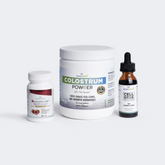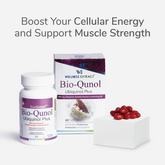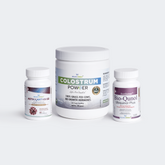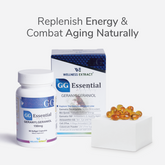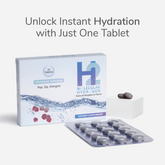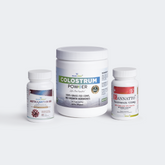Estimated Reading Time: 6 minutes
|Many people say that a deep-tissue massage will “release toxins” built up in muscles, and they often recommend drinking lots of water afterward to flush them out. But what do people mean by “toxins,” and is there any truth to these claims?
In this article, we look at what the body really does with metabolic waste, what massage therapists often say, and what the scientific evidence shows.
What Are “Toxins” Anyway?
In scientific terms, toxins are substances produced by living organisms, such as bacteria or plants, or introduced through environmental exposure.
But in everyday wellness conversations, the term is often used more broadly to describe things the body naturally eliminates, such as metabolic waste.
Let me ask; Have you ever been told you need a massage to “flush out lactic acid”? Here’s the truth:
-
Lactic acid is a normal byproduct when your muscles burn energy.
-
Your body actually recycles it pretty quickly, often turning it back into usable fuel within minutes.
-
That soreness you feel after a workout? It’s not “toxins hanging around.” It’s usually tiny muscle microtears and your body’s repair process at work.
The truth is; your body is equipped with sophisticated systems, including the liver and kidneys, that handle waste elimination efficiently. Rather than focusing on vague detoxes, supporting these systems through proper hydration, nutrient-rich foods, and rest may help maintain the body’s natural balance.
How Does the Body Actually Eliminate Waste?
Your body is naturally equipped to clear waste and byproducts, and it does so without relying on massage. The primary organs that support this internal cleansing process include:
-
Kidneys: These organs filter your blood, removing metabolic waste products and excess fluids. The waste products, such as urea, salts, and water, are then excreted from the body through urine.
In fact, a review notes that the kidneys play a central role in removing “metabolic wastes and toxins” from the body.
-
Liver: This organ cleanses blood by processing toxins and byproducts. It changes many harmful chemicals into harmless forms and excretes them in bile.
The liver “filters (cleans) the blood, removing toxins and waste” which then leave the body via urine or faeces.
-
Other routes: Your lungs exhale carbon dioxide (a natural waste from metabolism). Your skin sweats out small amounts of salts and urea. The digestive tract expels solid waste (undigested food and microbes) through stool.
In a healthy person, these organs work continuously to keep the body’s chemistry balanced. They don’t stop or hold onto waste until a massage comes along. Drinking enough water and staying hydrated helps the kidneys do their job, but no extra water or massage is needed to make them “work” harder than usual.
Supporting the Body’s Natural Detox Pathways
While massage does not flush out toxins, supporting the body’s natural detox systems such as the liver and kidneys can play an important role in wellness. These organs work continuously to manage waste and help maintain balance.
If you're exploring gentle, science-informed ways to support your body’s natural detoxification, certain nutrients have been shown to play a helpful role in liver health. Some of them worth exploring include: fulvic acid, humic acid, and hydrogen water tablets.
Also Read: Cellular Detoxification: Learn to Detox Your Cells Naturally
Massage Myths: What Therapists Often Say
Some massage professionals suggest that massage boosts circulation and drains the lymphatic system, leading to the release of "toxins" from the muscles into the bloodstream. It's often recommended to drink extra water after a session to help the kidneys flush out these toxins.
However, scientific experts clarify that these beliefs are not supported by evidence. While massage can increase local blood flow and offer relaxation benefits, it does not remove toxins or metabolic waste from muscle tissue.
As one industry authority explains, massage does not assist in the removal of toxins. Likewise, drinking water after a massage does not flush out toxins because a massage does not create a new toxin load.
In reality, the kidneys are not placed under extra strain following a massage. Hydration is important for overall health, but it does not play a specific role in clearing waste related to massage. The idea of flushing toxins after a session remains a widely repeated myth without scientific support.
What Does the Research Show?
Many people believe massage helps flush out toxins like lactic acid, but research doesn’t support that idea.
One study had people do intense exercise, then try different recovery methods: resting, light exercise, or getting a massage. The results showed that massage didn’t speed up lactic acid removal, light exercise worked best. Just sitting quietly was just as effective as massage.
Another study found that massage might actually slow lactic acid removal. Why? Because the pressure from massage can reduce blood flow for a short time, which slows how quickly waste leaves the muscles.
So, the idea that massage “flushes toxins” isn’t backed by science. But that doesn’t mean massage isn’t helpful. A 2017 review showed that massage can reduce soreness after exercise and help muscles feel better. Researchers think this is due to relaxation and reduced inflammation, not detox effects.
Massage Benefits (Not Related to Toxins)
Even though massage doesn’t flush out toxins, it offers many legitimate benefits that are backed by research. For example, studies and expert reviews have found that massage can:
-
Reduce muscle soreness and tension:
Massage after exercise or for chronic muscle aches often lowers pain levels and speeds recovery.
-
Promote relaxation and stress relief:
Many people feel calmer after a massage. Massage can lower heart rate and ease anxiety, contributing to overall well-being.
-
Improve circulation and flexibility:
By manipulating tissues, massage may temporarily increase blood flow to muscles and help loosen tight areas. This can improve range of motion and ease stiffness.
-
Support mental well-being:
The comfort of human touch and a calm environment can reduce stress hormones and boost mood.
All of these effects are well-documented by therapists and in some clinical studies. But notice that none of these are about “detox”. The benefits come from things like improved blood flow (within normal limits), muscle relaxation, and nervous-system changes. For instance, a meta-analysis concluded that massage after strenuous exercise “could be effective for alleviating DOMS and improving muscle performance”. This shows massage has value, but through muscle and nerve pathways rather than flushing chemicals.
Key Takeaways
-
Your liver and kidneys handle detox. Massage doesn’t speed up their natural filtering process.
-
“Toxins” is a loose term. Lactic acid and similar byproducts don’t build up or need squeezing out.
-
No proof massage “flushes” waste. Studies show it doesn’t help clear lactic acid and may even slow it.
-
Drink water for health, not detox. Hydration is important, but massage doesn’t make it more necessary.
-
Massage has real benefits. It can ease soreness and stress, just not because it's removing toxins.
-
Think of massage as self-care. Enjoy it for relaxation and recovery, not as a detox treatment.
In summary, you can enjoy a massage for stress relief, pain help, or just self-care. But it’s best to view it to relax and feel better in the moment, not as a medical “detox” treatment. The body already does an excellent job cleaning itself, with or without massage.
Disclaimer: This article is for informational purposes and does not constitute medical advice. The information provided has not been evaluated by the U.S. Food and Drug Administration and is not intended to diagnose, treat, cure, or prevent any disease. Always consult a qualified healthcare professional regarding your personal health needs.
References
-
Imenez Silva PH, Mohebbi N. Kidney metabolism and acid–base control: back to the basics. Pflügers Archiv - European Journal of Physiology. 2022;474(8):919-934. doi:https://doi.org/10.1007/s00424-022-02696-6
-
Guo J, Li L, Gong Y, et al. Massage Alleviates Delayed Onset Muscle Soreness after Strenuous Exercise: A Systematic Review and Meta-Analysis. Frontiers in Physiology. 2017;8(747). doi:https://doi.org/10.3389/fphys.2017.00747
-
Gupta S, Goswami A, Sadhukhan A, Mathur D. Comparative Study of Lactate Removal in Short Term Massage of Extremities, Active Recovery and a Passive Recovery Period After Supramaximal Exercise Sessions. International Journal of Sports Medicine. 1996;17(02):106-110. doi:https://doi.org/10.1055/s-2007-972816






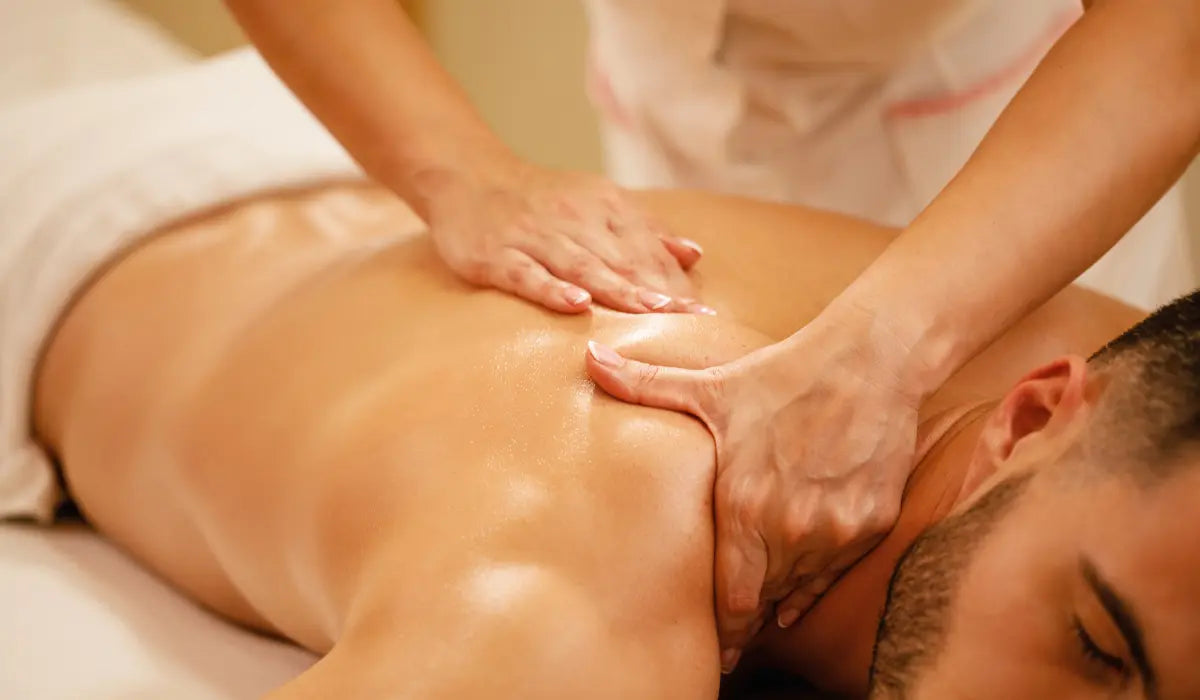


![Top 5 Best Vitamins for Men in Their 30s [Backed by Science!]](http://wellnessextract.com/cdn/shop/articles/Vitamin_for_men_8fe0fe21-19b1-4020-b895-dc104449637e_165x.webp?v=1765878148)











